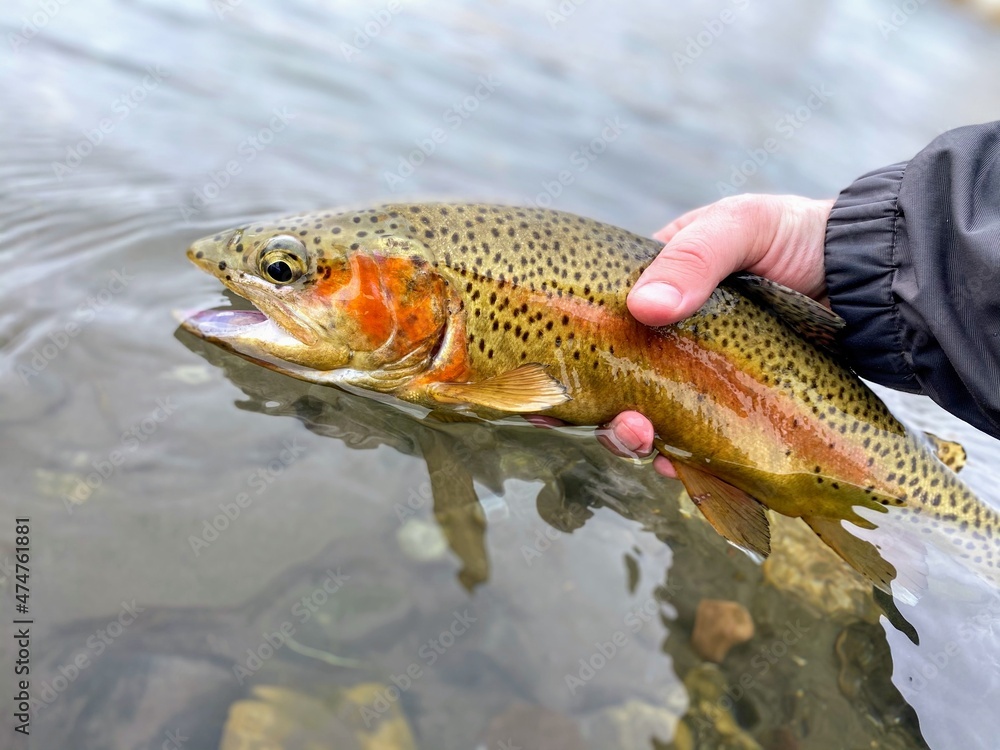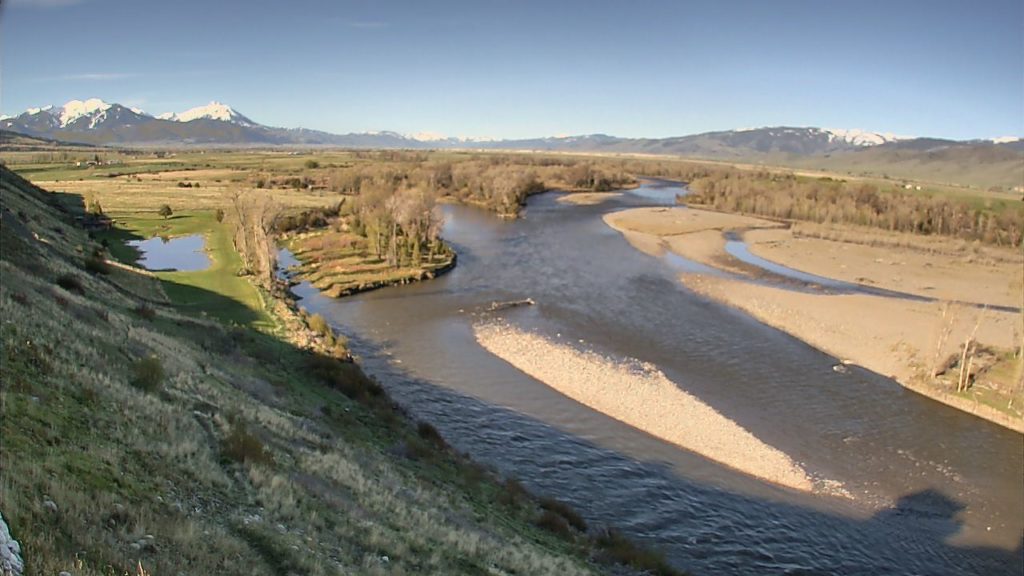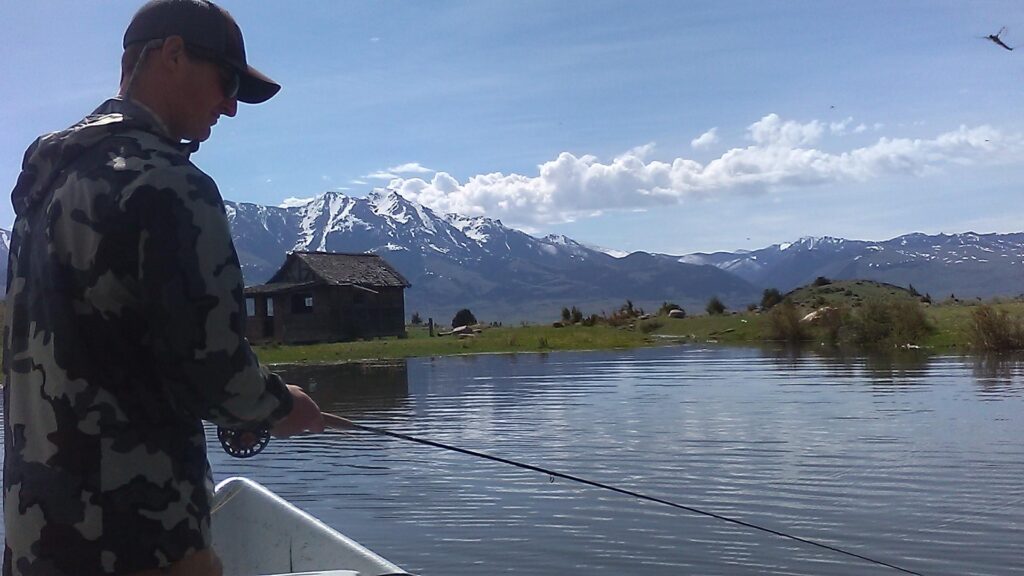
The Yellowstone River is soon to be big and muddy, Throughout the state of Montana, and particularly in the Yellowstone watershed, we received a good amount of high-mountain snow this past winter. All of that snow needs to melt and make it through our rivers and towards the ocean, which means that our runoff is on our way. It could be mid-June (or possibly even later) before we are able to safely float and fish the Yellowstone River again. The same will be true of the majority of “freestone” (undammed) rivers in the state of Montana, though conditions will vary from watershed to watershed.
What’s the angler to do who is planning to fly fish in Montana from late May through mid-June? The options may be limited, but there will be options. Read about a few good ones below, though be forewarned that there are a number of variables in play, in particular the local weather patterns between now and when most of the snow has melted. Some of these waters may or may not be fishable, depending on when you are planning to be in our area.
The Paradise Valley Spring Creeks
The three private spring creeks that are just up the road from Sweetwater Fly Shop (DePuy’s, Armstrong’s, and Nelson’s) are generally not affected by snowmelt and runoff, as their water is emerging straight from the ground. The only exception would be if they experience major flooding from the nearby Yellowstone River. The creeks can be challenging fishing, but our guides know them well and can help you “learn the ropes.” Click to read more about our guided trips on DePuy’s Spring Creek and Armstrong’s Spring Creek, and read more about fishing strategies for the creeks here.
The spring creeks’ landowners do charge a “rod fee” for fishing access and also limit the number of anglers who can fish on any one day. They tend to be quite popular (and therefore fully booked) during the summer months, so please give us a call right away if you’re hoping to get on one of them during that time.
Private Ranch Ponds
Several cattle ranches in our general area have ponds or small lakes on their properties that they allow anglers to fish (for a fee, of course). Like the spring creeks, they also limit the number of anglers per day, so call us for reservations as early as possible and plan to be flexible with your dates. The ponds are stocked with various trout species and those fish tend to grow large (some get huge). The trout are often eager to take streamers, nymphs, and dry flies. We usually fish the lakes from a drift boat and our guides would be happy to pass on their knowledge of lake fishing techniques. Because the fishing pace is less “hurried” than on a river float, the lakes are a great place for novices to hone their fly fishing skills (and have a good chance of landing some nice trout in the process). Call us right away to schedule a guided fishing trip on one of these gems.
Tailwaters
We have 3 “true” tailwaters in the area, though all are a bit of a drive from Livingston, The Upper Madison out of Hebgen Lake near West Yellowstone, the Missouri River out of Holter Dam north of Helena, and the Bighorn River out of Yellowtail Dam south of Billings. All three are deep bottom-draw reservoirs, meaning the water comes out of the dam clear and at a constant temperature. The farther downstream from the dam, the more the influence of runoff as unregulated tributaries such as the West Fork of the Madison and the Dearborn on the Missouri dump high water and mud into the river. Our guides know the Madison well, and some also guide the Missouri and Bighorn. Give us a call and we’ll see what we can work out for you, especially if you’re wanting to fish multiple days, given the extra driving and gas.
Lower Madison River
The “Lower” spills out of Ennis Lake, which is shallow and a top-draw dam, so not a “true” tailwater. However, the river tends to drop a lot of silt as it moves through the slower lake currents, and therefore tends to clear earlier than the um-dammed Yellowstone River. The lower section is about an hour from the shop, it offers up some nice fish, and many of our guides know it well. If you’re visiting in June, get in touch and we’ll get you out, depending on conditions.
Firehole River – Yellowstone National Park
The general fishing season in Yellowstone National Park opens the Saturday of Memorial Day weekend, but many of the waters we fish in the Park, such as the Lamar River and Slough Creek, will likely be too high and muddy to fish at that time. An exception is the Firehole River on the west side of the park, which carries a lot of spring-fed water. It tends to fish well in the early season before becoming too warm later in the year. The Firehole has many species of caddis and swinging soft hackles is a favorite pursuit of those in the know. The Firehole is a pretty long drive for our guides, but give us a buzz and we’ll see what we can get set up.
A Word of Caution
Melting snow is cold and flows can change quickly this time of year. Stay aware for sudden rising water, carry extra clothes if you’re fishing away from your vehicle, and take care when you’re wading in colored water.
Final thoughts
If your trip to Yellowstone Country coincides with runoff on the Yellowstone River, don’t despair. There’s always somewhere to fish even when conditions are at their worst. It might be on a smaller tributary like Mill Creek, which tends to clear sooner then the ‘Stone, but stop by or call and we’ll do our best to get you into some fish!
0





Leave a Reply
You must be logged in to post a comment.